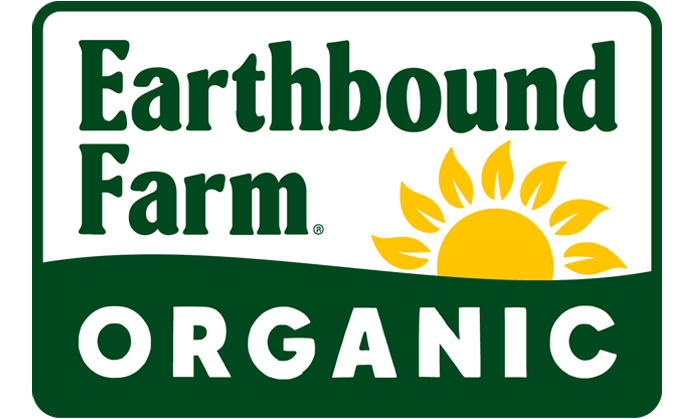Meet Farmer Stan Pura
Meet Stan Pura
In eighth grade, Stan Pura farmed his first crop—six acres of sugar beets for a 4-H project. But his connection to farming did not start, or end, there. His grandfather, an immigrant from Switzerland, was a dairy farmer, and his father was a row crop farmer in Greenfield, Calif.
In 1978, at the age of 22, Stan became a farmer of conventional iceberg lettuce. For nearly twenty years, he continued to farm conventionally and, as he said, “quietly watched some of the early pioneers in sustainable agriculture [which] sparked an interest in trying that production system.”
In the meantime, Drew and Myra Goodman, the founders of Earthbound Farm, were farming organically on 40 acres in Carmel Valley, Calif. Their operation was very small and their farming methods were clearly less sophisticated than those of large production farmers, but their passion for growing organic was big, and they had a keen business sense for marketing.
First friends and tennis partners, Stan and the Goodmans soon became business partners. “The first time Stan came to visit us on the farm,” remembered Myra, “he couldn’t believe that we were farming this way.”
“Stan looked at our farming—which was amazingly amateur-like and sloppy relative to his extreme diligence and meticulousness on his farm—and there was not one comment,” remembers Drew. “He was a complete gentleman about any comments that he might have had on what we might be doing wrong.” Myra added, “He didn’t let his criticisms or concerns get in the way of moving forward with working with us.
Despite the differences in the way they farmed, the partnership took off. Earthbound was infused with what the growing company needed most: more land, more resources, and most of all, the dedication of farmers who could help them scale organic agriculture with integrity.
One of the biggest contributions Stan made to farming was the invention of the baby greens harvester, a machine that drastically changed the scale of baby greens farming forever.
Seventeen years ago, he took a trip to Europe with his wife to attend a farm equipment show. Europe’s farming methods were more mechanized than those in the United States at the time, but the machines were built for smaller ranches and more seasonal use. After touring several farms, Stan came home brimming with ideas. He worked with a local fabrication shop to create a harvester that could withstand year-round use and harvest thousands of acres. In less than 12 months, the first prototype was ready to test.
The harvester was a game changer and helped contribute to a dramatic reduction in the price of baby greens like spring mix and baby spinach, because more greens could be harvested more quickly. The harvester, with a crew of eight to ten doing lighter work could do the job of 50 people hand harvesting. This made the delicious organic greens more accessible to people around the country, effectively popularizing spring mix. Now there are 18 harvesters mowing one million pounds per day.
Stan still farms conventionally, in addition to organically. When asked about the differences between the two farming methods, he had this to say:
“On the conventional side, you have a tool chest of all different types of inputs to produce a crop. You can be reactive to a problem. If you have a problem out there, spray it. And I mean no disrespect to anybody, but it’s much easier to be a conventional farmer than to be an organic farmer.
“On the organic side, it’s an instinctive art and definitely much more surrounded by the soil health. You have to be very proactive and plan where you’re going to plant crops, and what type of crops you‘re going to put where, different times of the year. You have to rely heavily on varieties with some resistance; you need more of an all-encompassing program. From seed varieties to soil health fertility, you have to be much more proactive and a stronger farmer culturally—and it’s less forgiving on the type of soils that you can farm.”
He went on to explain that he has noticed a significant difference in the health of the soil on Earthbound Farm ranches that have been farmed organically for 25+ years. He said that some of the ranches that were “somewhat marginal” in the beginning are so much more forgiving today because we’ve been building the soil health for two and a half decades. It is true that you can certify ground as organic after three years of farming it organically, but it takes about seven years to really build up the health of the soil.
Not only is Stan still farming, but farming continues in the rest of his family as well. His wife raises organic grass-fed cattle. His five daughters all work in the agriculture industry, two of them at Taylor Farms. When asked if there was one thing he’d like people who aren’t farmers to know about farming, Stan replied, “We grew up as a small family farm, and we happened to be part of a category that grew. From six acres to 20,000 acres, it hasn’t changed who we are,” he said with clear pride and emotion in his voice. “It hasn’t changed how we do things. And some people seem to have a negative connotation about big ag, large scale, that is not fair.
“I think what I would like to have them understand is that it’s an honorable profession and we are a combination of conservationists, environmentalists. We have an instinctive art at what we do. And there’s nothing factory about it.”
Stan is proud of Earthbound Farm’s legacy, and happy about how much organic production and usage has grown, but he says that his defining moment is yet to come. He says there is still more work to do to get more organic to more tables, more kitchens, more farms.
